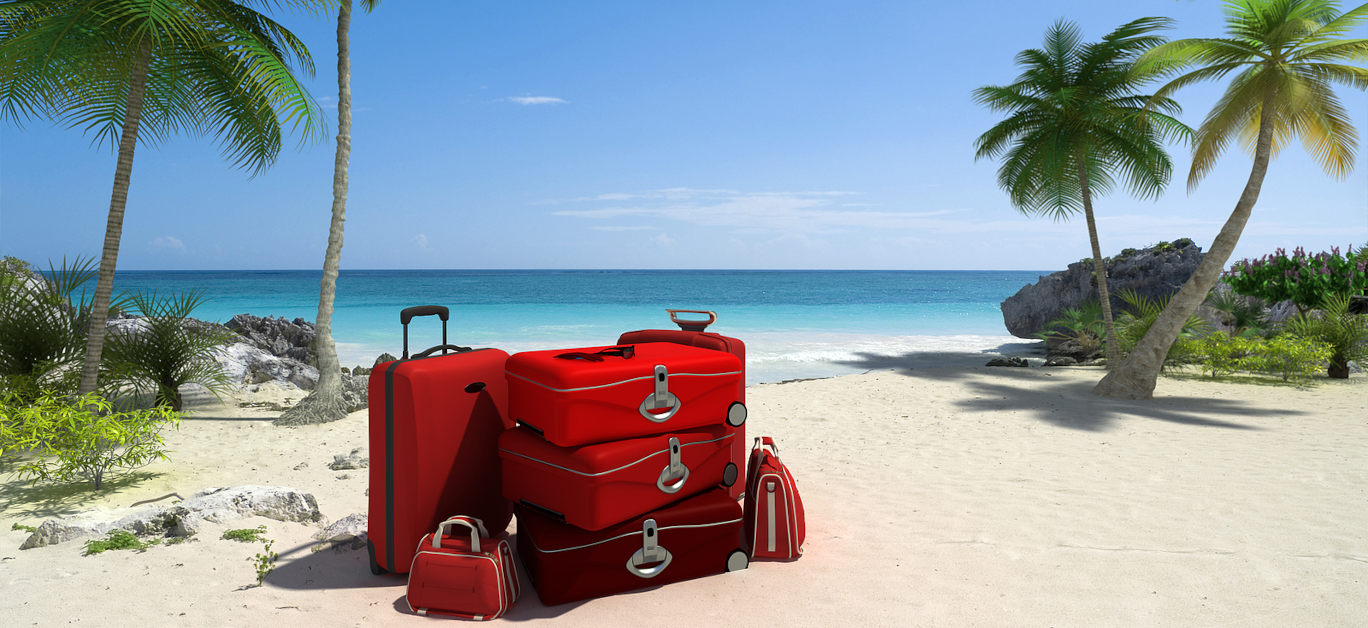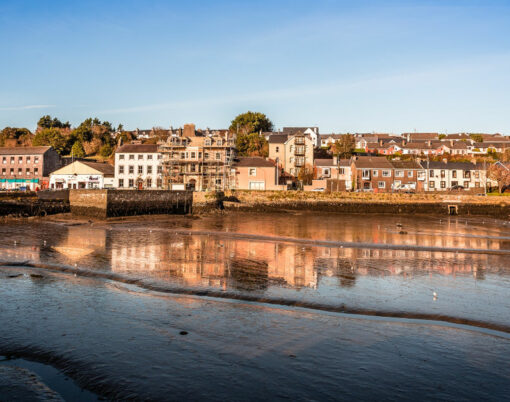Your suitcase is open on the bed, clothes are scattered around the room, and you’re wondering how you’ll possibly fit everything in for that dream holiday in the sun. For the over-packer, it’s a common occurrence, and one that can often cause undue stress before checking in for your First Class flight and letting your adventure begin.
But the good news is that with the right strategy and approach, you can transform the task of packing your suitcase from a dreaded chore into an efficient, streamlined process and ensure that everything you need will be coming with you with minimal hassle – and no sitting on your suitcase in the hopes that it will finally, eventually zip up.
We’ve rounded up some top tips for making smart choices that save you time, spare you from extra baggage fees, and ensure you have exactly what you need for your journey – and that will ensure that you’re packed and ready to go well ahead of time. All that’s left to do is board your flight, sit back, relax and sip on a glass of champagne at 30,000 feet as you await your arrival at your lavish destination of choice.
Knowing what you’re packing for
It sounds simple, but knowing exactly what you’re packing for is the first step to success. Having a rough idea of what you’ll be doing each day and where you’ll be going will make it far easier to know what you actually need to take with you and will remove the guesswork – as well as a fair chunk of items that are surplus to requirements from your suitcase.
Bear in mind your destination, the climate, and the activities you’ve planned, as they will significantly influence your packing list and make it easier to see what is unnecessary. First, let’s delve a little deeper into the questions to ask yourself before you begin.
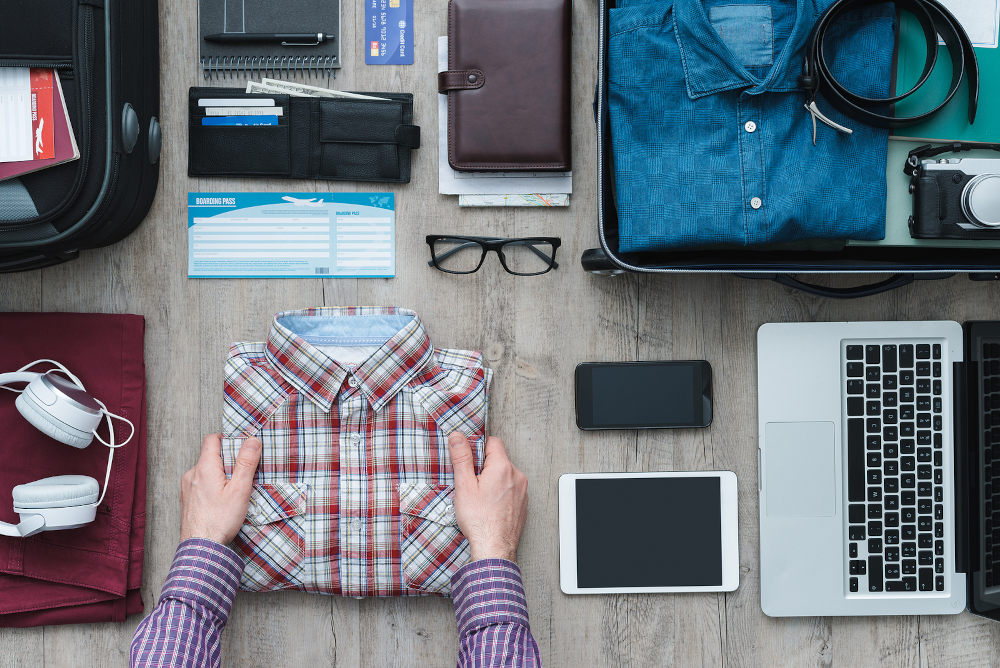
What’s the airline baggage policy?
Knowing how much you’re allowed to carry in your hand luggage or checked baggage is also important. There’s no use packing everything you can think of only to find that your suitcase is overweight, so check your chosen airline’s baggage policy and your allocated weight allowance to give you a rough guide to work from. Every airline is different, so don’t make any assumptions. The International Air Transport Association (IATA) advises a maximum weight of 23kg (50.7 lbs) for checked baggage, and you may need to pay extra with some airlines for additional bags or for exceeding this limit.
Where are you going – and how long for?
Are you heading to a tropical paradise where swimwear and sunscreen are needed, or will you be spending your days exploring the streets of a historic European city, where unpredictable weather is likely and thus layers will be your best friends? You might find that if you’re heading to a luxury beachfront resort then you won’t actually be wearing much clothing during the day, so a few bikinis, shorts and beach cover-ups will suffice, leaving only your evening attire to nail down.
How long you’ll be away is another key consideration; there’s no point packing ten outfits if you’re only going away for a long weekend, so be ruthless and don’t fall into the trap of wanting to have lots of choice because you’re a ‘mood dresser.’
What’s the weather forecast?
We all know weather can be unpredictable, but a quick check of the forecast can save you from any surprises and make packing for your getaway a whole lot easier. If you’re expecting nothing but sunshine then it’s easy to pack light, but if you’re unsure what conditions you’ll be dealing with then you’ll need to ensure that all eventualities are covered, which can prove a little trickier.
Nevertheless, it can be done; it’s all about packing lightweight garments that can be taken off or put on as the temperature and weather changes. A sudden cold snap or an unanticipated rainy season can completely throw off your packing plan if you’re not prepared, so a last-minute review of the weather forecast is wise and will allow you to make any necessary adjustments to your packing list.
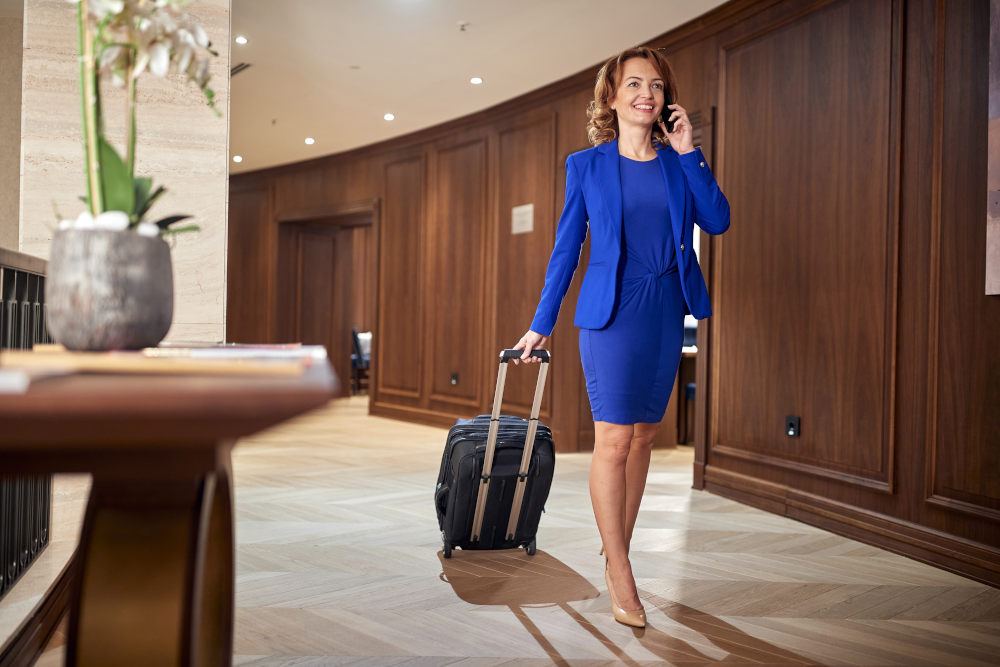
What’s your itinerary?
Think of your itinerary as your roadmap for packing. Hiking, beach days, or even formal dinners mean very different attire and accessories are needed, and knowing you have a fancy dinner or a night out can mean the difference between packing that sleek dress or suit and leaving it at home.
If what you do on your trip is going to be more spontaneous, then focus on versatile pieces that can adapt to various situations – a pair of shoes that can handle both a casual day of exploration and a nicer evening out, or a jacket that’s as suitable for a cool morning walk as it is for a museum day.
If you want to save space in your luggage but also ensure that you have everything you need for a comfortable and enjoyable journey, you’ll want to consider all of these factors to make life easier. Then, you can move on to actually starting to pack.
The art of packing light
The concept of packing light is all about making intelligent choices that maximise space and focus on versatility. But how exactly can you pack efficiently without sacrificing comfort or style?
Essential clothing tips
To pack light, you’ll want pieces that can be dressed up or down, and stick to a cohesive colour palette to ensure that everything works together. Think of it like a capsule wardrobe, and opt for items that can be worn in a variety of different ways, so opt for fabrics that are lightweight, crease-resistant, and suitable for layering. For a week-long trip, a well-planned selection of tops, bottoms, and a versatile dress or pair of trousers can suffice, enabling numerous outfit combinations from a limited selection.
Limit shoes
Shoes are often the bulkiest items in your luggage, so try to limit yourself to two or three pairs for most trips: a comfortable pair for walking, a versatile casual-to-dressy option, and, if necessary, specialised footwear for outdoor activities like hiking. And an extra little tip to help you maximise space in your suitcase; always wear the heaviest, bulkiest pair during travel to save on both weight and room.
Travel-size toiletries
Toiletries can quickly add weight and take up space in your luggage, so opt for travel-sized versions of your essentials and consider multi-use products, like shampoo-conditioner combos or moisturisers that already contain SPF. Many items can be purchased in solid form, such as soap bars, solid shampoos, toothbrush powder and makeup remover, which are not only space-savers, but also more sustainable options.
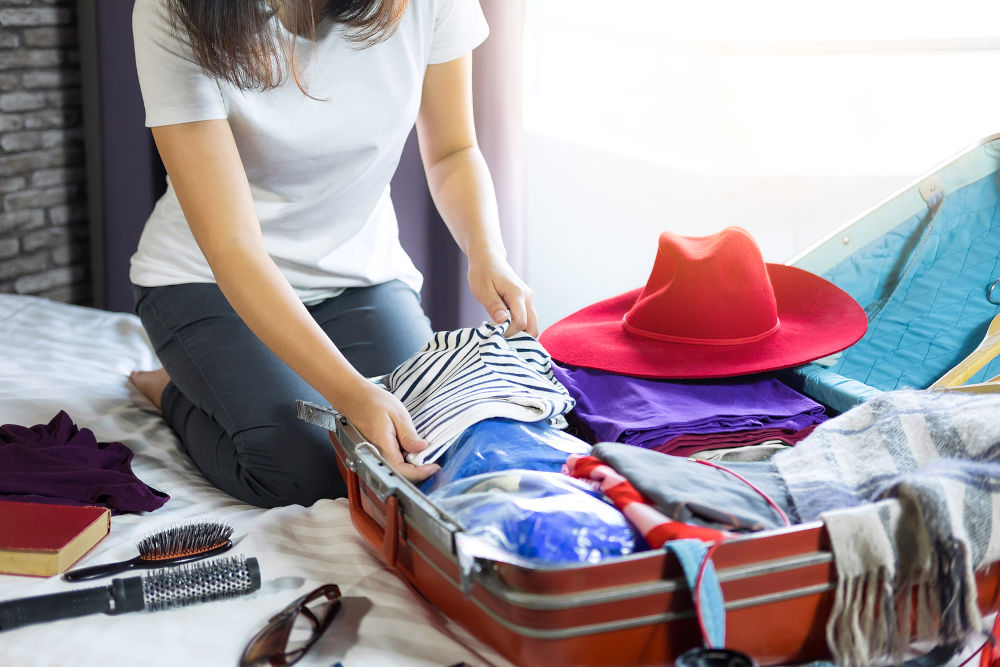
Next level organisational mastery
Achieving organisational zen in packing transforms your suitcase into a neatly arranged treasure chest of travel essentials. Here’s how to elevate your packing strategy to pro levels:
Packing cubes
These little organisers are game-changers, allowing you to compartmentalise different types of items, like clothes or jewellery and make it easier to find things once you arrive as well as saving room by compressing items into smaller spaces. Assign a cube for tops, another for bottoms, and perhaps a small one for underwear and socks, as well as one for accessories and toiletries each.
Rolling vs. folding
Rolling clothes instead of folding can significantly save space and reduce wrinkles – a technique that works exceptionally well for casual wear like t-shirts and jeans. According to a survey by Cheap Flights, 70% of travellers prefer to fold rather than use the rolling method, but they’re missing out on the extra space it can bring. For more formal attire, consider folding around a core item, like a pouch filled with socks, to provide structure and further minimise creases.
Electronics and cables
Keep cables, chargers and small electronics organised and easily accessible by using a dedicated electronics organiser or a small zip pouch, which will prevent tangling and damage and save you from rummaging through your bag for a charger.
With everything in its place, you’re less likely to overpack or forget essentials, ensuring a stress-free start to your journey.
Advanced packing techniques
Want to elevate your packing efficiency even further? Embrace these advanced techniques that seasoned travellers swear by:
The layer packing method
Think of your suitcase as layers in a cake, organising items based on their sequence of use and priority. Place heavier items at the bottom, near the wheels for stability, followed by rolled clothes, and then fragile items or those needed upon arrival on top. This method optimises space and keeps your belongings organised.
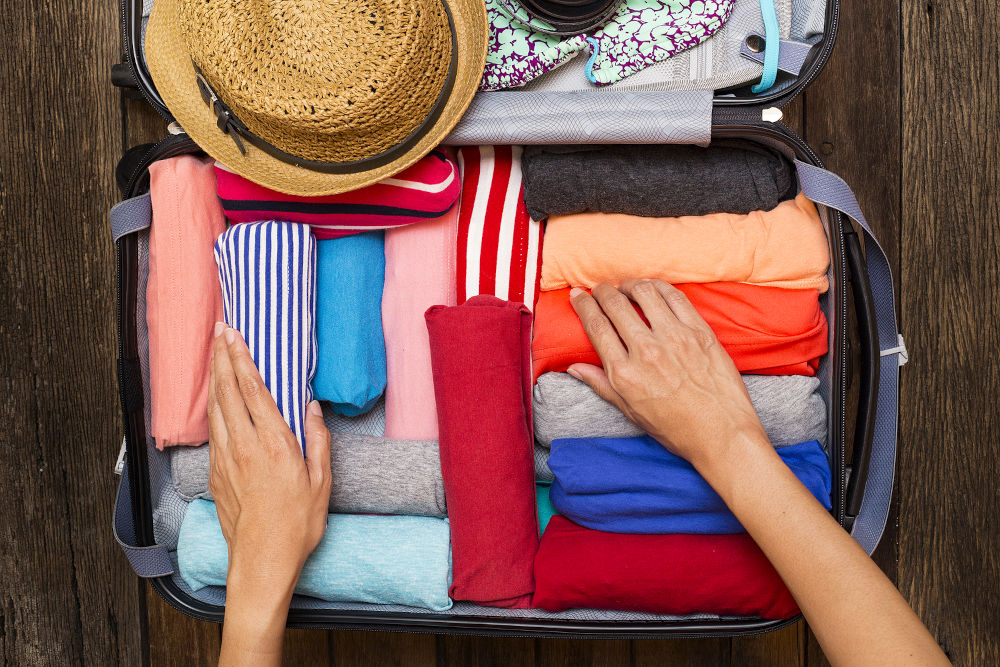
Space savers
Utilise every inch of your suitcase by filling shoes with small items like socks or accessories. Wearing your bulkiest clothes and shoes during travel can free up considerable space too, while compression or vacuum bags can be ideal for bulky items like jackets, reducing their volume significantly.
Use a packing list
Before packing, create a detailed checklist tailored to your trip. Along with your travel itinerary, this will ensure that you pack only what’s necessary and avoid last-minute additions. A well-thought-out checklist will act as your roadmap to packing efficiently, ensuring nothing essential is left behind while preventing overpacking. You can find curated packing lists on Pack Hacker that can provide further help to get going with.
Don’t forget your travel docs
With all the focus on packing clothes, accessories and toiletries, you don’t want to forget about the essential items you’ll definitely need to pack – otherwise, you won’t get very far.
Travel documents and essentials
Keep your passport, visa (if required), tickets, and other essential documents like your travel insurance details in an easily accessible but secure part of your carry-on. Consider a travel wallet or pouch that can be worn close to your body.
Customs Compliance
Familiarise yourself with the customs regulations of your destination to ensure you don’t pack restricted or prohibited items. This may include restrictions on food, plants, and certain goods. Keeping your luggage organised and avoiding restricted items can speed up your passage through customs, making for a smoother journey. Check the Gov.UK website for a list of hand luggage restrictions you’ll need to be aware of.
Feeling more confident about packing for your next trip away? Remember, the goal is not just to pack efficiently but to travel with ease and confidence. Here’s to packing smart without the stress!












